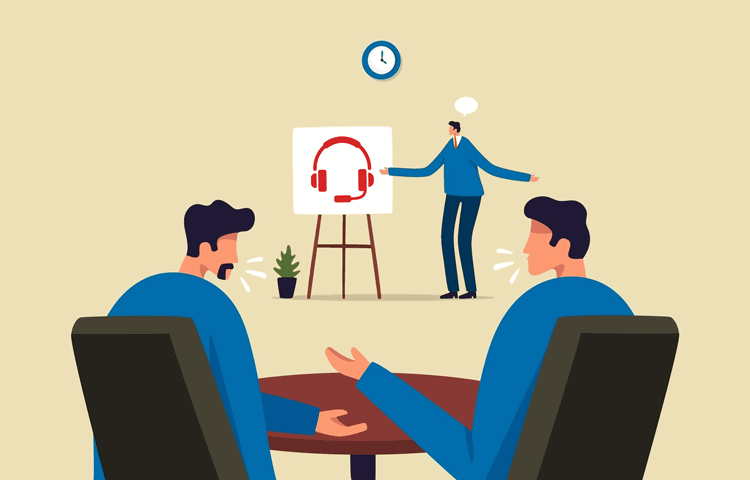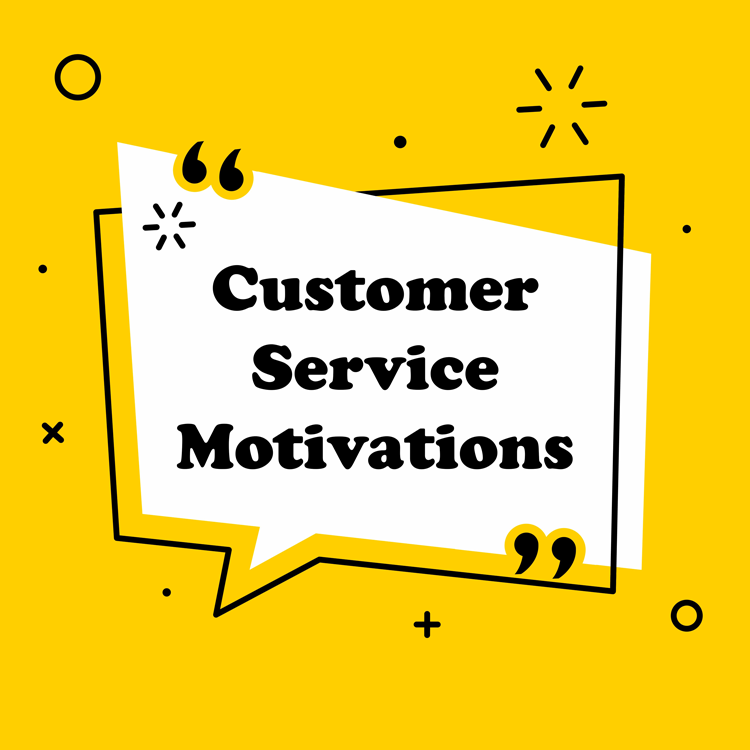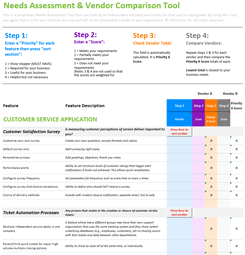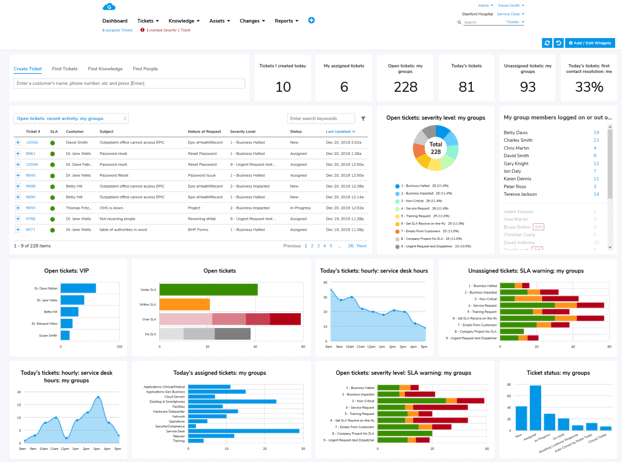Customer Service Training Activities: 12 Top Games and Exercises to Build Stellar Support Teams
Great customer service isn't just about resolving issues — it's also walking alongside customers in their support journey. Achieving this requires more than knowledge; it demands practice, teamwork, and the right training. That's where customer service training activities come into play.
This post provides a curated list of unique, actionable activities to help your team master communication, empathy, and problem-solving, all in a more interactive way, ensuring they deliver standout service with every interaction.
The following is our list of 12 excellent training activities for your customer service teams.

Communication-Focused Training Activities
Strong communication is the cornerstone of exceptional customer service. These customer service training games focus on building skills like active listening, clarity, and understanding nonverbal cues.
-
Role Reversal Exercises (In-person)
Put your team in the customers' shoes — literally. In this activity, participants take turns acting as the customer and the service representative. This helps them experience the challenges and frustrations customers face, encouraging empathy and improving their ability to respond thoughtfully.
How to implement:
- Prepare a set of customer scenarios (e.g., product returns, troubleshooting a device start-up issue).
- Pair team members and assign roles - one being the customer and one being the associate.
- Rotate roles after each scenario, encouraging feedback from both perspectives.
Key outcome: Build empathy and perspective.
-
The 5 Whys Game
This activity teaches your team how to uncover the root cause of customer issues by repeatedly asking "why." It's a simple yet effective way to develop critical thinking and problem-solving skills.
How to implement:
- Present a mock customer complaint (e.g., "The product isn't working").
- Encourage team members to ask "why" up to five times to dig into the underlying problem. Each "why" should attempt to get closer to solving the root cause, leading to a resolution.
- Discuss the insights gained and how to apply them in real scenarios. Perhaps the associates' questions need to be more specific to avoid customer frustration at repeated lines of questioning.
Key outcome: Develop critical thinking.
-
The Nonverbal Challenge
Nonverbal communication can convey more than words. This activity helps team members become more aware of their body language and facial expressions.
How to implement:
- Set up role-play scenarios where one participant resolves an issue without speaking, relying only on gestures, facial expressions, and written notes.
- The other participant acts as the customer and provides feedback on how the interaction felt.
- Debrief with the group, discussing how nonverbal cues can enhance or hinder communication. Of course, no customer service scenario would be completely "silent." However, making sure your body language implies that of interest, positivity, or concern (pending the situation) is important.
Key outcome: Enhance nonverbal communication.
Customer Empathy-Building Games
Empathy is at the heart of excellent customer service. These activities help your team step into the customer's world, better understand their needs, and deliver more compassionate, personalized support. Each customer service training exercise in this section is designed to develop emotional intelligence and strengthen your team's ability to connect with customers.
-
Customer Storytelling
Storytelling is a powerful tool for building empathy. In this activity, team members share real-life customer experiences, focusing on both challenges and successful resolutions. It's a great way to learn from past interactions while creating a customer-centric mindset.
How to implement:
- Ask team members to prepare short stories about memorable customer interactions (positive or challenging). These can be examples from inside or outside of the current organization. If your organization records customer service calls for training and record-keeping purposes, you can also use these here as more of an interactive example.
- Share the stories in a group setting, highlighting lessons learned.
- Encourage discussion about how these insights can shape future interactions (ex. what can be done differently next time?).
Key outcome: Enhance emotional intelligence.
-
Walk in Their Shoes (Virtual)
This activity recreates the online customer experience to help your team identify pain points and opportunities for improvement.
How to implement:
- Set up a mock customer journey, including website navigation, and calls, chats and emails into customer service.
- Have team members play the role of customers and document their experiences.
- Afterward, discuss findings and brainstorm ways to improve the journey. You can question areas such as finding a product, length of time on hold, etc.
Key outcome: Identify customer pain points.
-
The "What If?" Game
This creative exercise challenges your team to think quickly and empathetically by responding to hypothetical customer scenarios.
How to implement:
- Prepare a list of "what if" situations (e.g., "What if a customer demands a refund but doesn't have a receipt?").
- Present scenarios to the group and give them 1-2 minutes to craft their responses.
- Discuss responses as a team, emphasizing empathy and creativity in their solutions. While speed is not the name of the game here, you should focus on reacting to a customer scenario in a reasonable amount of time.
Key outcome: Boost adaptability and creativity.
Support Service Problem-Solving Exercises
Problem-solving is a vital skill for any customer service professional. These activities focus on helping your team think critically, remain calm under pressure, and deliver effective solutions during customer interactions. Each customer service training exercise here is designed to improve adaptability and creativity.
-
Scenario-Based Role-plays
Realistic role-play exercises allow your team to practice handling challenging customer situations in a controlled environment.
How to implement:
- Create a set of realistic customer service scenarios, such as handling complaints, resolving product issues, or calming frustrated customers.
- Assign roles for team members to play the customer and representative.
- After each role-play, provide constructive feedback and discuss alternative approaches.
Key outcome: Strengthen real-world readiness.
-
Problem-Solution Brainstorming
Encourage teamwork and creative thinking with this group exercise focused on solving hypothetical, yet challenging, customer scenarios.
How to implement:
- Present a challenging customer issue to small teams (e.g., "A product didn't arrive on time").
- Give each team 5-10 minutes to brainstorm as many avenues to a solution as possible.
- Have teams present their solutions, then discuss the most effective approaches as a group.
Key outcome: Inspire innovative thinking.
-
Service Obstacle Course
This fun and interactive activity simulates the challenges of the customer journey, giving your team practice in addressing issues at different touchpoints.
How to implement:
- Set up a series of "obstacles" representing common service challenges (e.g., incomplete customer information, unexpected shipping delays, etc).
- Assign team members to work through the obstacles in sequence, providing solutions for each one. For example, for shipping delays or technical support, team members can simulate escalation to different departments.
- Afterward, discuss how they managed each challenge and what could be improved (perhaps a problem could have been solved with one less escalation).
Key outcome: Improve teamwork under pressure.
Team Collaboration Activities
Team collaboration is essential for a seamless customer service experience. These activities emphasize teamwork, communication, and collective problem-solving, helping your team function as a well-oiled machine. Whether through fun customer service training games or structured exercises, these activities build trust and cohesion.
-
Service Bingo
Make customer service training fun with this interactive game that reinforces key skills and behaviors.
How to implement:
- Create bingo cards with customer service actions (e.g., "Resolve a complaint calmly" or "Use active listening").
- During practice sessions or live calls, team members check off actions as they complete them.
- Reward the first team member to get a bingo for added motivation.
Key outcome: Reinforce best practices.
-
Feedback Circles
Constructive feedback is necessary for growth, and this activity allows team members to learn from each other in a supportive setting.
How to implement:
- After a role-play or live customer interaction, have the group gather in a circle.
- Each team member provides constructive feedback, focusing on what went well and what could improve from their personal perspective.
- Ensure the environment is positive and solutions-oriented. This is not meant to be insulting, but rather constructive.
Key outcome: Promote continuous improvement.
-
Quickfire Problem Rounds
This fast-paced activity builds teamwork and sharpens problem-solving skills under pressure.
How to implement:
- Divide the team into small groups and present them with rapid-fire customer scenarios (e.g., "A customer is upset about a late delivery").
- Each group must come up with a solution in under a minute.
- Compare solutions and incorporate rewards for those that are able to finish the scenarios in the time limit specified.
Key outcome: Sharpen decision-making speed.
5 Everyday Habits for Customer Service Success
While activities and exercises are critical for skill development, applying everyday best practices brings long-term success in customer service. These 5 tips can help your team improve their approach to customer interactions consistently.
- Build a Customer-Centric Culture: Build a workplace environment that prioritizes customer satisfaction at every level - from navigating your website to post-purchase support.
- Encourage Active Listening: Teach your team to focus fully on the customer's words, asking clarifying questions when needed.
- Invest in Ongoing Training: Regularly introduce new customer service training exercises and tools to keep skills sharp. The environment is constantly evolving and so should you!
- Empower Employees to Make Decisions: Provide team members with the authority to resolve customer issues promptly. This can also help employees better feel a sense of ownership and pride in a job that can sometimes feel "thankless".
- Leverage the Right Tools: Simplify workflows and improve customer interactions with the right software solutions (Discover how Giva can streamline your customer service process).
The Bottom Line: Customer Service Excellence Starts with Training
Providing exceptional customer service isn't just about having a great product or service — it's about creating meaningful interactions. By implementing the right customer service training scenarios, activities, and games, you can equip your team with the skills they need to communicate effectively, empathize with customers, and solve problems under pressure.
Training doesn't have to be a one-time event. It also doesn't need to involve manuals or training clips. Whether through creative role-plays or structured exercises, the investment you make in your team will pay off in improved customer satisfaction and loyalty.
Keep the Conversation and Ideas Flowing with Some of These Additional Resources
- Customer Service Levels: Definitions, Importance and 20 Creative Improvement Strategies
- White Glove Customer Service: How to Implement, Overcome Obstacles and Measure for Success
- 12 Top Techniques for Customer Service Problem Solving
- How to Streamline the Customer Service Workflow Process: 10 Practical Examples
Giva Brings Worry-Free Software for Your Customer Service
Focus on creating the best support teams rather than be distracted with difficult support software.
Giva's people and AI-powered Customer Service Software makes issue management a breeze, where people are the center of excellent service and AI Copilots increase productivity.
- Start serving customers after just 1 hour of training.
- Resolve issues quickly and effortlessly with AI Copilots, automation and smart workflows.
- Get immediate and actionable customer insights with highly visual dashboards, reports, charts and graphs.
Let Giva be your customer service partner! Book a Giva demo today to see our solutions in action, or start your own free, 30-day trial!





